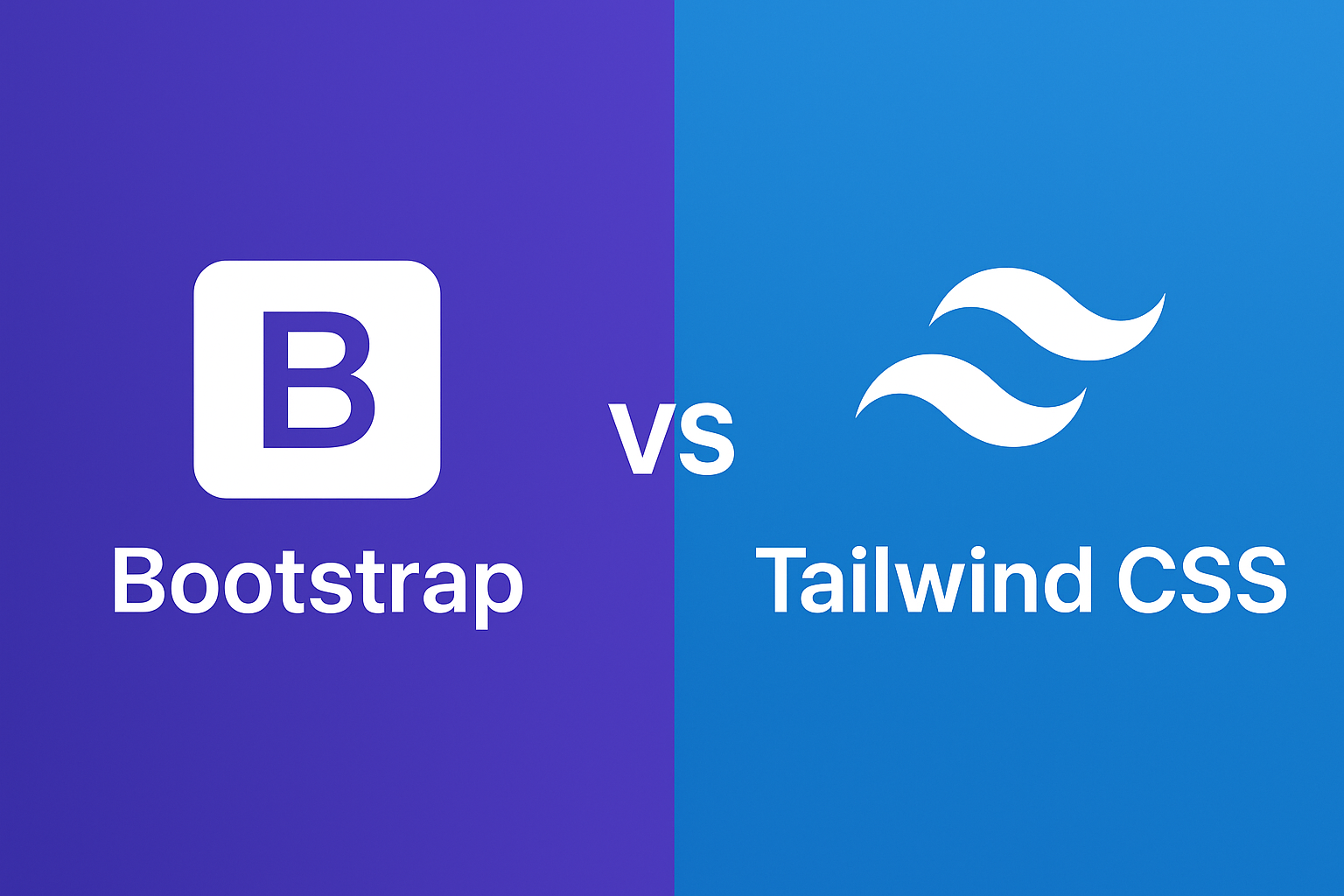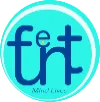Bootstrap vs Tailwind CSS – Framework Comparison

Senior WebCoder

CSS frameworks have revolutionized how web developers build websites, offering reusable styles and patterns. Among the vast ecosystem of CSS tools, Bootstrap and Tailwind CSS stand out as two of the most popular yet fundamentally different frameworks.
This comprehensive guide breaks down everything you need to know: origins, philosophies, core features, differences, pros, cons, and guidance on when to choose each.
Origins & Background
Bootstrap
Bootstrap was created by Mark Otto and Jacob Thornton at Twitter and released as an open-source project in 2011. Its goal was to unify and standardize the company’s internal design patterns, reduce development time, and provide a consistent, responsive UI framework.
Bootstrap quickly became popular because it bundled a robust set of CSS components (buttons, navbars, modals, grids), JavaScript plugins, and a mobile-first grid system — making responsive design easier for developers worldwide.
Tailwind CSS
Tailwind CSS is much newer. Created by Adam Wathan and released in 2017, Tailwind introduced a utility-first CSS approach, which was revolutionary at the time.
Instead of pre-built UI components, Tailwind provides atomic utility classes—small, single-purpose CSS classes such as mt-4 (margin-top: 1rem) or text-gray-700. Developers compose these utilities directly in HTML to craft custom designs.
This approach shifts design control from the framework to the developer, enabling highly customized and scalable styling with fewer overrides and no CSS bloat.
Core Design Philosophy: Component-Based vs Utility-First
| Aspect | Bootstrap | Tailwind CSS |
|---|---|---|
| Philosophy | Component-based UI framework | Utility-first atomic CSS framework |
| UI Style | Pre-styled components (buttons, cards, navbars) | Minimal/default styles, compose via utilities |
| Customization | Themeable, but component styles are limiting | Highly customizable via config/utility classes |
| Design Control | Framework dictates overall look and feel | Full control for developers |
Technical Comparison
1. CSS Architecture
- Bootstrap: Uses traditional CSS with Sass, offering a comprehensive set of scoped, pre-styled components.
- Tailwind: Tailwind CSS uses utility classes for every CSS property (padding, margin, font size, color). This means you write styling inline with HTML classes instead of separate CSS files.
2. File Size and Performance
- Bootstrap: Ships a large CSS file (often 150–200KB+) since it includes many components, even if only a few are used.
- Tailwind: Tailwind uses PurgeCSS (or built-in JIT compiler) to remove unused classes, resulting in smaller CSS bundles (often under 20 KB), optimized for production.
3. Responsiveness
- Bootstrap: Features a flexible 12-column grid and responsive utilities (e.g.,
col-md-6). - Tailwind: Mobile-first with breakpoint prefixes for utility classes (e.g.,
md:text-center,lg:px-8), enabling granular responsive design.
4. JavaScript & Interactivity
- Bootstrap: Bundles JS components (modals, dropdowns, tooltips) originally powered by jQuery, now moving to vanilla JS.
- Tailwind: CSS-only. Interactivity comes from external tools/libraries (React, Vue, Alpine.js, etc.)
Advantages of Bootstrap
- Ready-to-use UI Components: Plug-and-play buttons, modals, navbars, and more.
- Consistent Design Language: Opinionated and professional out-of-the-box look—ideal for dashboards and enterprise apps.
- Easy Learning Curve: Beginners can quickly build layouts without deep CSS knowledge.
- Mature Ecosystem: Bootstrap has a massive community, tons of third-party themes, templates, and plugins, making it easy to find support and resources.
Disadvantages of Bootstrap
- “Bootstrap Look”: Sites often appear similar unless heavily customized.
- CSS Bloat: The entire stylesheet typically loads, even if only a small subset is used.
- Limited Customization: Overriding styles can be complex and cumbersome.
- JavaScript Dependencies: Bootstrap’s JS components traditionally rely on jQuery, adding extra dependencies (though newer versions aim to reduce this).
Advantages of Tailwind CSS
- Complete Design Freedom: No preset styles; build entirely custom interfaces.
- Smaller CSS Bundles: JIT compilation and purging lead to minimal production CSS.
- Rapid Prototyping: Quickly experiment with new layouts and styles directly in HTML.
- Highly Customizable: The configuration file lets you define your theme tokens and utilities.
- Modern Workflow: Tailwind works seamlessly with modern JS frameworks (React, Vue, Angular) and build tools like PostCSS and Webpack.
Disadvantages of Tailwind CSS
- Steeper Learning Curve: Requires memorizing and composing many utility classes.
- Verbose Markup: HTML can become cluttered with a long list of utility classes.
- No Prebuilt Components: You build every UI element from utilities — no plug-and-play buttons or navbars out of the box.
- Responsibility on Developer: Design consistency is developer’s responsibility, which may lead to inconsistent UIs in larger teams without strict guidelines.
Use Cases: When to Choose Bootstrap or Tailwind?
| Scenario | Recommended Framework |
|---|---|
| Quick prototyping with standard UI | Bootstrap |
| Enterprise apps with common UI patterns | Bootstrap |
| Custom, unique website design from scratch | Tailwind CSS |
| Minimal CSS bundle size & high flexibility | Tailwind CSS |
| Working with React/Vue/modern frameworks | Tailwind CSS |
| Preference for ready-made JS UI components | Bootstrap |
Real-World Examples
- Bootstrap: Common in admin dashboards, CMS themes (e.g., WordPress themes, backend panels).
- Tailwind CSS: Widely used by startups, SaaS apps, and projects demanding bespoke UIs, especially those on React/Vue stacks.
Conclusion
Choosing between Bootstrap and Tailwind CSS depends on your project needs and workflow preferences:
- Pick Bootstrap for fast development with a comprehensive, consistent design system and built-in JS interactivity.
- Choose Tailwind CSS for total design control, smaller CSS, and a modern, utility-first approach tailored for custom UIs.
Both are excellent frameworks. Mastering each will prepare you for most modern web development needs!
